VC2E1LE03
discuss plots, characters and settings through a range of literary texts
- recognising similar characters and settings in a range of literary texts, for example traditional tales, narrative poems and fables
- discussing whether features of settings, including time (year, season) and place (country or city), are realistic or imagined
- discussing how plots develop, including beginnings (orientation), how the problem (complication) is introduced and how it is solved (resolution)
- Plus Plan
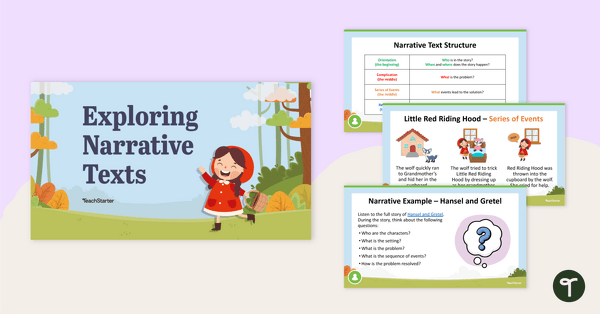
Exploring Narrative Texts PowerPoint
Teach your students about the key elements of narrative texts with this comprehensive teaching presentation.
- Free Plan
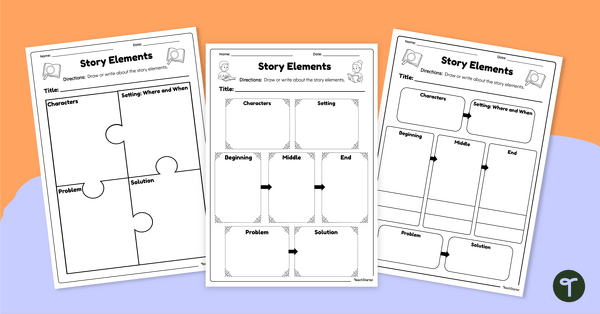
Narrative Elements Graphic Organisers – Portrait
Encourage your students to write and draw about various story elements with this set of differentiated graphic organisers.
- Plus Plan
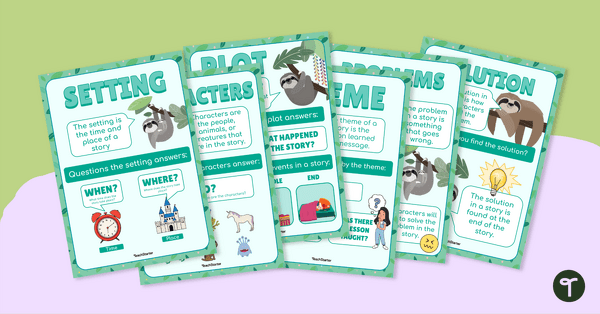
Story Elements Poster Set
Display these cute sloth-themed story elements posters when learning about narrative texts.
- Plus Plan
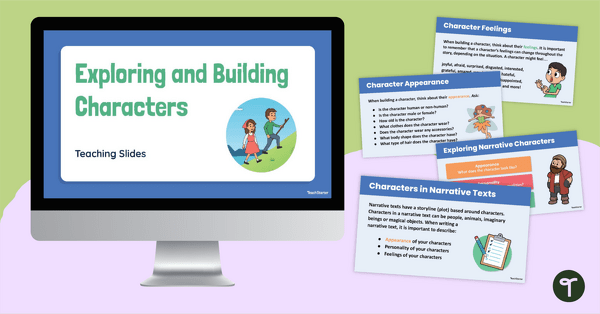
Exploring and Building Narrative Characters PowerPoint
Use this editable PowerPoint template when teaching younger students about how to build a character for a narrative text.
- Plus Plan
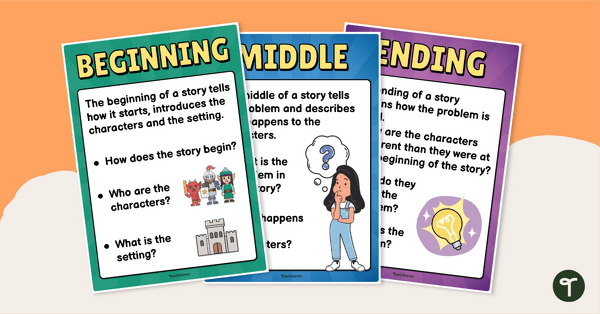
Beginning, Middle and End of Story Poster Set
Remind students of the elements that make up the beginning, middle and end of a story with this set of three posters.
- Free Plan
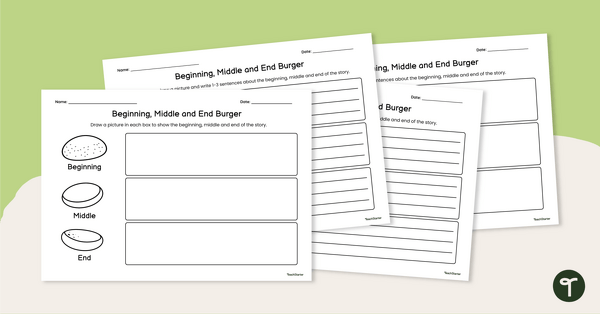
Story Beginning, Middle and End Graphic Organiser
Help your students write and draw about the beginning, middle and end of stories with this set of differentiated graphic organisers.
- Plus Plan

Character Traits, Feelings and Appearance - Posters
A set of 3 posters depicting words and phrases that can be used to describe a character's personality, feelings and appearance.
- Plus Plan
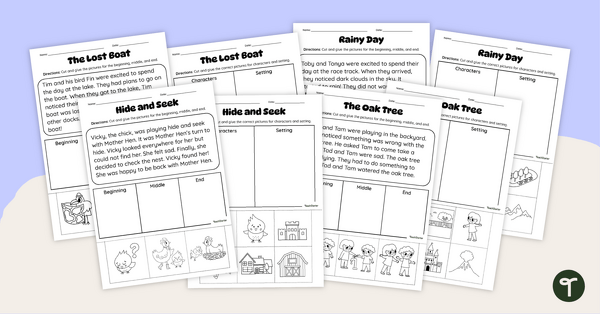
Beginning, Middle End Worksheets
Explore the main structure and story elements in a short story with these beginning, middle and end worksheets.
- Plus Plan
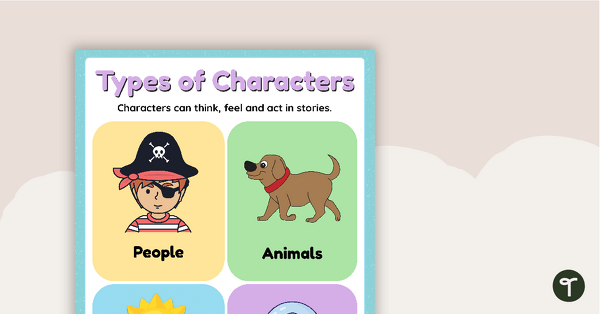
Types of Characters - Poster
Remind students about the types of characters that can be found in stories with this colourful classroom poster.
- Plus Plan

Character Interview Task Cards
Use these book character interview questions to extend your students' learning about the narrative elements.
- Plus Plan
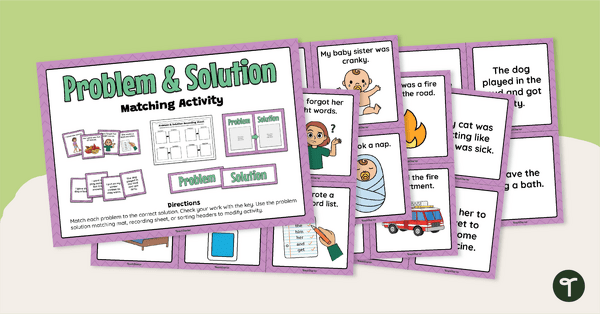
Story Problem and Solution Matching Activity
Match problems with their solutions to enhance your students' knowledge using this problem and solution matching activity.
- Plus Plan
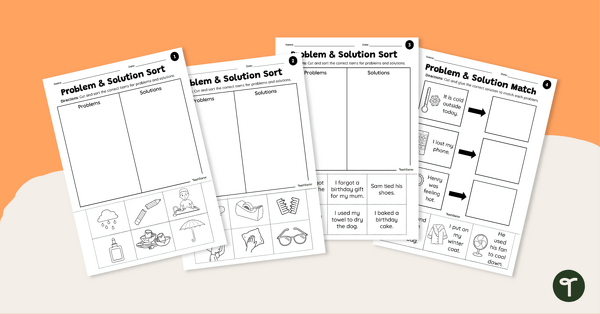
Problem and Solution Worksheets
Explore narrative elements with this set of problem and solution worksheets.
- Plus Plan
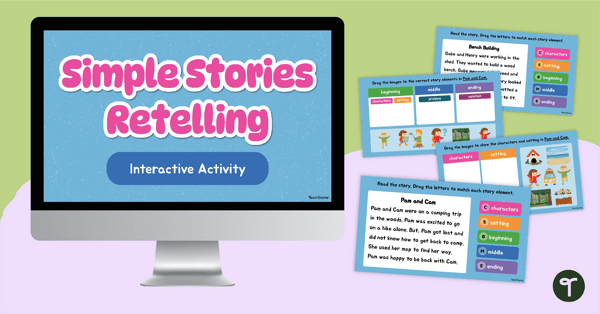
5 Elements of a Short Story Activity
Explore the 5 elements of a short story using this digital activity with five short stories.
- Plus Plan
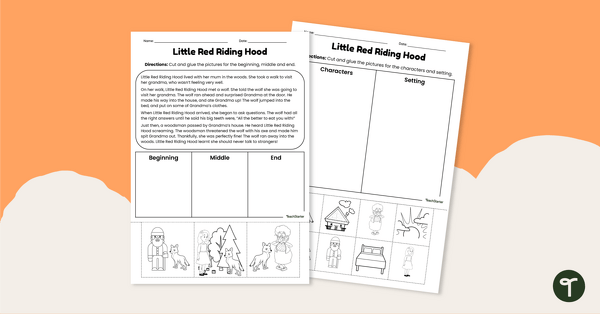
Story Elements Cut and Paste Worksheets – Little Red Riding Hood
Explore story characters, settings and main events with this set of cut-and-paste worksheets based on a well-known fairy tale.
- Plus Plan
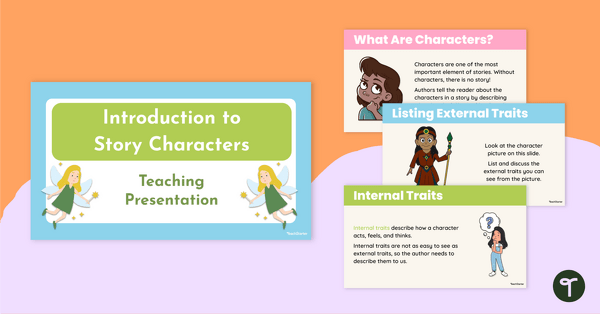
Introduction to Story Characters Teaching Slides
Introduce your students to the wonderful world of story characters with this visually appealing teaching presentation.
- Plus Plan
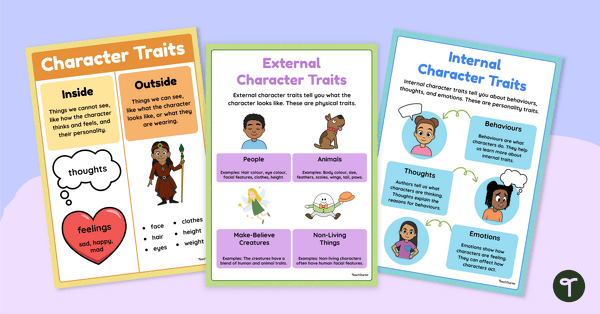
Character Traits Posters
Remind your students about the difference between external and internal character traits with this set of three classroom posters.
- Plus Plan
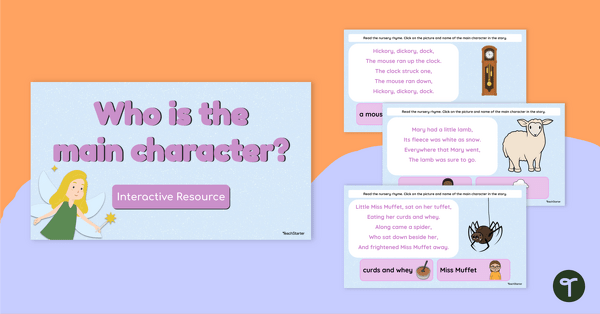
Who Is the Main Character? Interactive Game
Practise identifying the main characters in nursery rhymes with this interactive digital activity.
- Plus Plan
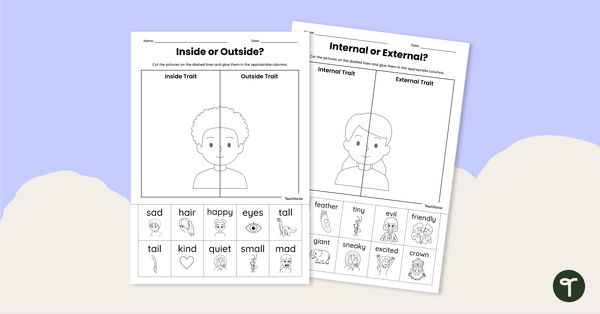
Internal and External Character Traits - Cut and Paste Worksheet
Explore the internal and external traits of story characters with this differentiated cut-and-paste worksheet.
- Free Plan

Character or Not? Cut and Paste Worksheet
Explore the difference between characters and non-characters with this cut-and-paste worksheet.
- Plus Plan
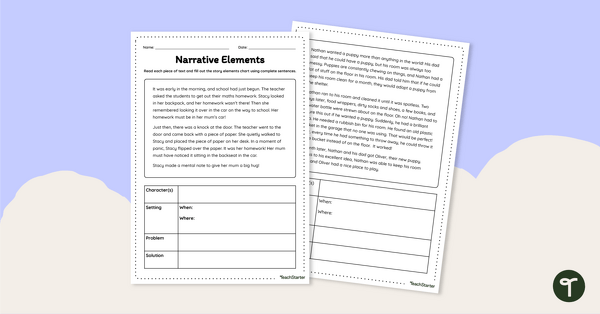
Narrative Elements - Worksheet
Practise identifying characters, settings, problems and solutions in fictional texts with this set of worksheets.
- Plus Plan
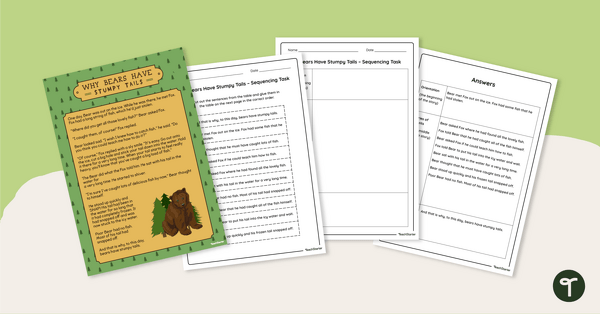
Why Bears Have Stumpy Tails – Sequencing Worksheet
Identify the story beginning, series of events and ending with this narrative text sequencing activity.
- Plus Plan
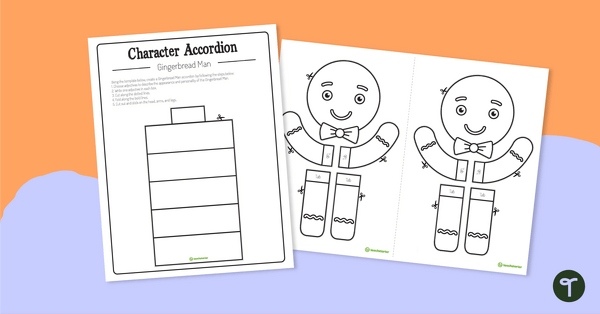
Character Adjective Concertina Template – The Gingerbread Man
Learn how adjectives can be used to describe a character's appearance and personality with a hands-on craft activity aligned to the English curriculum.
- Plus Plan

Narrative Elements Fairy Tale Sorting Activity
Explore narrative elements with this fairy tale sorting activity in the shape of a castle.
- Plus Plan

Story Bag Surprise - Story Elements Digital Activity
Introduce and explore different story elements with this story bag surprise digital activity for the whole class to enjoy.
- Plus Plan

Story Elements Worksheets – The Ants and the Grasshopper
Practise identifying the story characters, settings and main events with this set of worksheets based on a traditional tale.
- Plus Plan
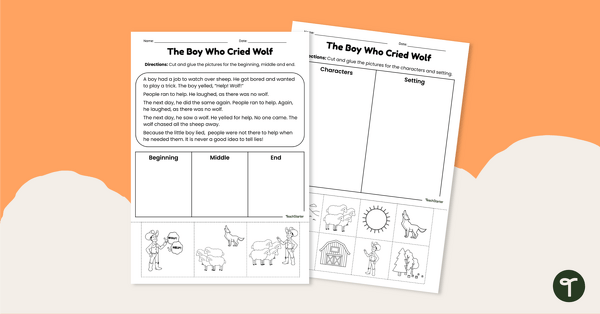
Story Elements Cut and Paste Worksheets – The Boy Who Cried Wolf
Explore story characters, settings and main events with this set of cut-and-paste worksheets based on a well-known fable.
- Plus Plan
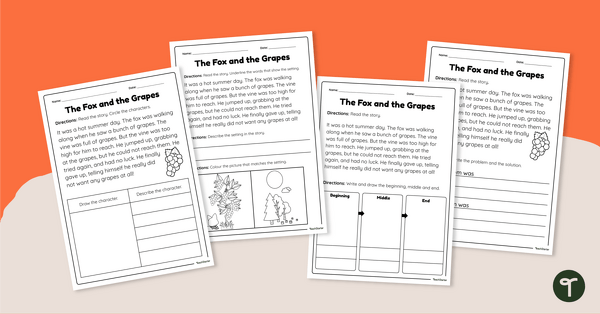
Story Elements Worksheets – The Fox and the Grapes
Practise identifying the story characters, settings and main events with this set of worksheets based on a traditional tale.
- Plus Plan
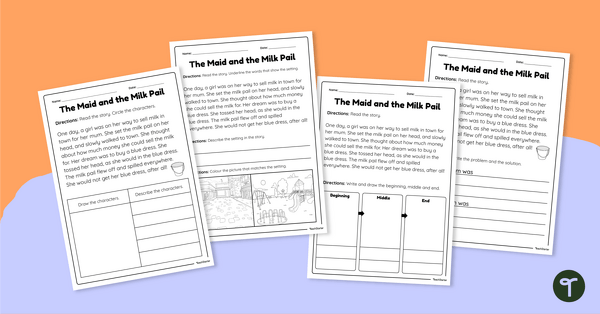
Story Elements Worksheets – The Maid and the Milk Pail
Practise identifying the story characters, settings and main events with this set of worksheets based on a traditional tale.
- Plus Plan
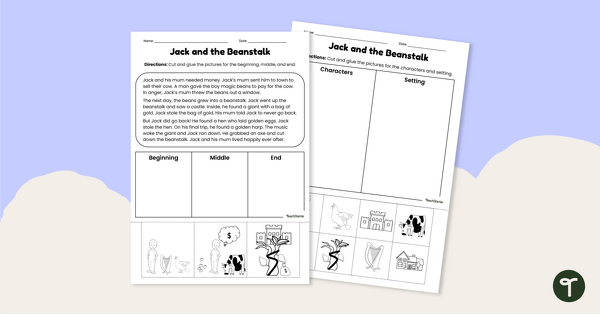
Story Elements Cut and Paste Worksheets – Jack and the Beanstalk
Explore story characters, settings and main events with this set of cut-and-paste worksheets based on a well-known fairy tale.
- Plus Plan
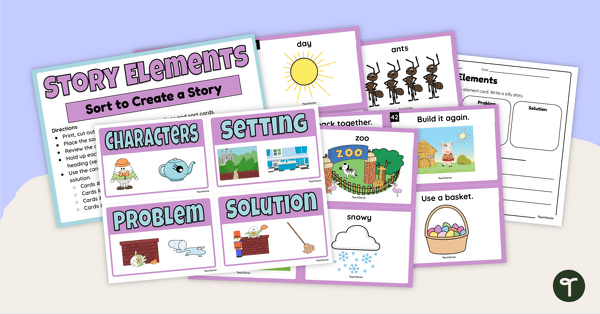
Create a Silly Story – Sorting Activity
Explore story characters, settings, problems and solutions by creating a silly story!
- Plus Plan
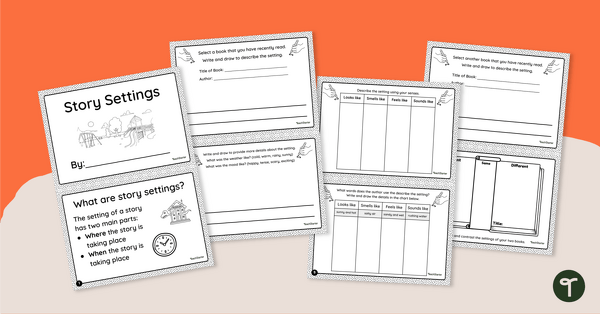
Story Settings Mini Book
Allow your little learners to explore and write about story settings with this fun-sized mini-book.
- Plus Plan
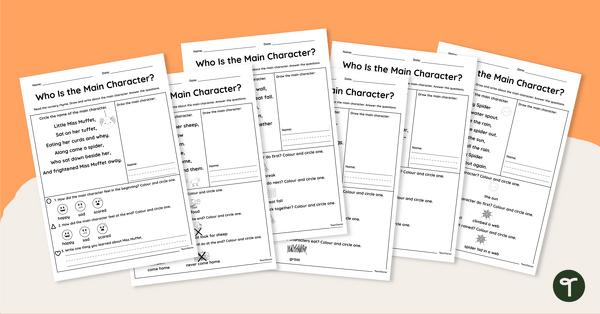
Who Is the Main Character? Worksheets
Practise identifying the main characters in nursery rhymes with this set of worksheets for young learners.